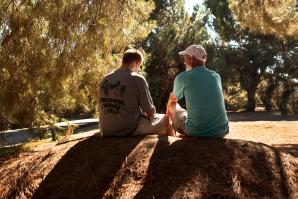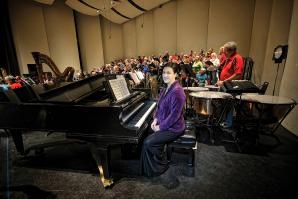Each week, more than 50 children from Sacramento’s Gardenland/Northgate neighborhood fill a small room and computer lab in River Garden Estates apartments. They’re seeking help with homework, signing up for outings and volunteering for community service.
There are more children who want to participate in the program, known as The GreenHouse, than there is room.
Kacie Stratton, the nonprofit’s executive director, launched the community program after reading a Sacramento Bee article that described a single neighborhood block in Sacramento that was home to more than 550 children — the biggest concentration in Sacramento County.
“I was fascinated by that number of children,” Stratton says. “At the time, my husband and I were part of a new church in Natomas. We just really wanted to serve, so we started talking to other people in the church and started volunteering on Saturdays at the neighborhood park. We would basically just put on a fun kids’ day.”
The weekend events went on for nearly six months, and Stratton and other volunteers got to know neighborhood families.
“We were invited into apartments and noticed things like lack of furniture, lack of school supplies and lack of children’s books,” she says. “We started dreaming about an after-school program.”
That dream became a reality in 2003 when Stratton and a small team of volunteers opened The GreenHouse, a Christian community enrichment program.
The seven-year-old organization now offers after-school tutoring programs for youth, summer camp, a youth group for teens, Bible study, affordable sports participation and leadership programming.
“My daughters get a lot of benefit. I go to work, and I go to school. I don’t have time to take them to do things like camping,” says Monica Ledisma. Her daughters, Johanna and Lupita Cabrera, ages 14 and 12, have attended The GreenHouse since its inception.
“I was involved in Leaders in Training — we talk about the future,” Johanna says. “We got involved in a service project, and I wanted to give toys to kids at Sutter Memorial (Hospital). I always wanted to do that, but never had money.”
Through her service project, Johanna was able to donate dozens of puzzles, board games and Barbies to hospital playrooms. “The kids in the playroom were so excited,” she says.
The GreenHouse does what it can on a $125,000 budget. It raises about $30,000 at the annual Kids at Heart dinner and silent auction on the first Sunday after Memorial Day. The rest filters in through charitable donations and sporadic grant funding.
Stratton’s programs alternate days because there simply isn’t enough space for all the youth to attend at once. She hopes the program can raise enough money to buy a new space or rehab one for trade. In the meantime, she’s seeking mentors and volunteers to spend at least two hours a week with the children. Stratton says the donations and volunteers’ have thus far been hugely beneficial, especially for Johanna.
“Her service project was so important to her,” Stratton says. “Now, she’s not even the same kid. She’s one of those kids at risk, and she could really go either way with her future. But this project grounded her and seemed to give her a vision for her future. I think having those mentors in her life was powerful.
Recommended For You

Seen & Not Heard
Child advocates could fundamentally shift foster care outcomes, if only there were more volunteers
Over half a million kids live in foster care in the U.S. as a result of abuse, neglect or abandonment. Because they can’t advocate for themselves, many become victims a second time, lost in an overburdened child welfare system that can’t pay close attention to each child. But one program is drastically improving outcomes for foster youth, despite the overwhelming odds.

Youth Song of Stockton
Stockton Symphony's sellout concerts — and program cuts
Financial donations to the 83-year-old Stockton Symphony are down sharply, yet shows are selling out.


